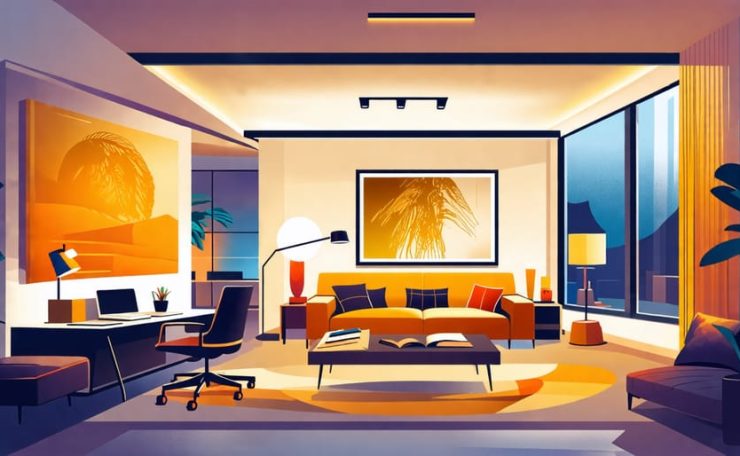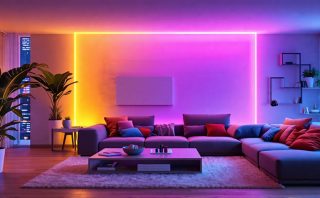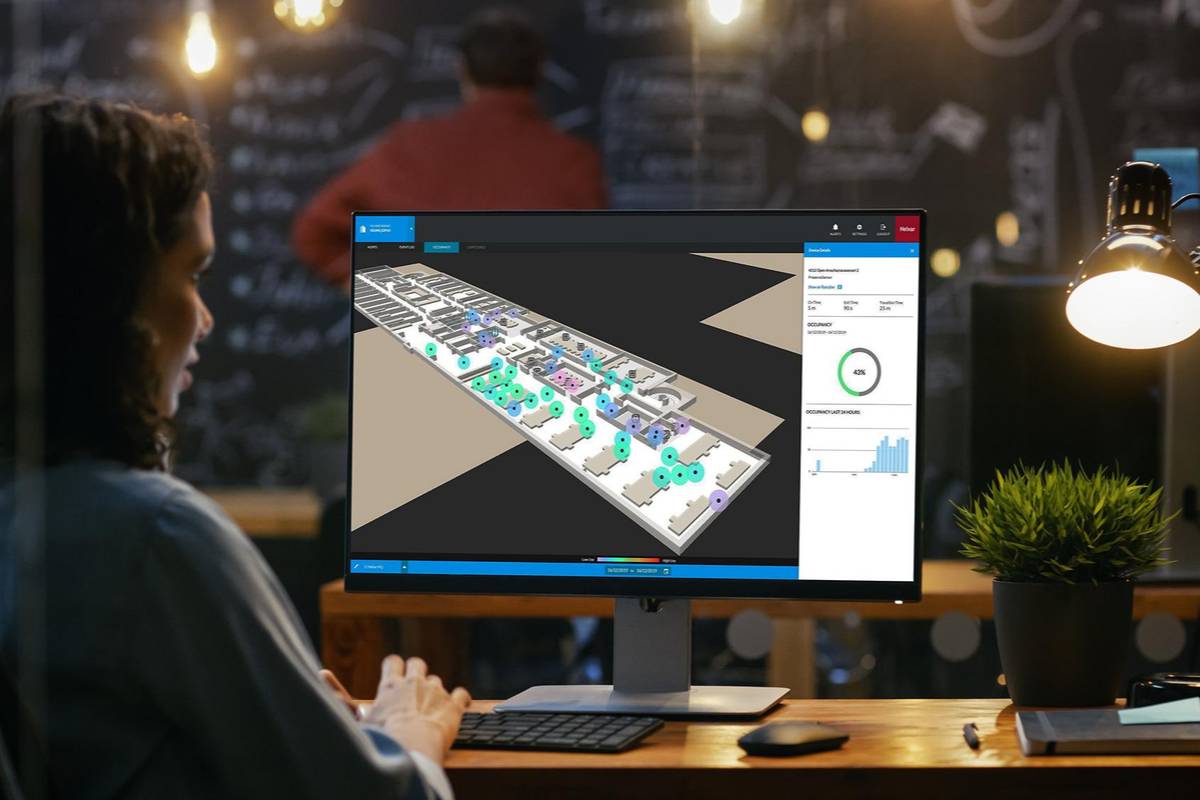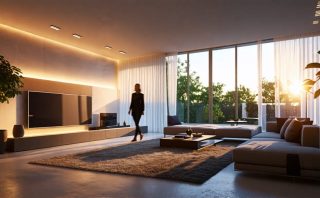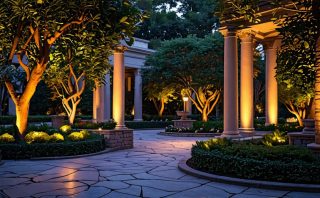Identify key areas that require illumination. Assess focal points such as artwork, architectural features, and functional zones like reading nooks or workspaces. Choose the right lighting types: combine ambient, task, and accent lighting to layer your space effectively. Adjust brightness and color temperature for ambience, ensuring each light source matches the room’s purpose and mood. Consider dimmable options for flexibility. Lastly, consult an expert lighting design professional for personalized advice and detailed product comparisons.
Understanding the Fundamentals
Light Quality and Its Impact
Good light quality is integral to effective lighting design, influencing both the aesthetics and functionality of a space. It involves more than just brightness; it encompasses color temperature, consistency, and directionality. Proper color temperature ensures spaces feel inviting and appropriate for their use—for instance, warm lighting creates a cozy atmosphere in living areas, while cooler hues are ideal for workspaces. Consistency in lighting reduces glare and shadows, creating a seamless and visually appealing environment. Directionality, on the other hand, focuses on where the light is aimed, enhancing features and creating depth within a room.
Poor lighting can strain the eyes and diminish productivity, whereas high-quality light enhances mood, emphasizing details and color accurately. It’s vital for setting the right ambiance, influencing emotions, and ensuring comfort and efficiency. For anyone planning a lighting revamp, understanding the nuances of light quality aids in crafting spaces that are both beautiful and functional, ultimately improving overall satisfaction and comfort.
Understanding Color Temperature
Color temperature is a key consideration in lighting design, defining the warmth or coolness of a light source. Measured in Kelvin (K), it spans from warm tones around 2000K, resembling candlelight with a cozy ambiance, to cool tones exceeding 5000K, akin to daylight with a crisp and energizing effect. Understanding the impact of color temperature is crucial for creating the desired atmosphere in different environments. In residential settings, warmer temperatures (2700K-3000K) are often preferred for living rooms and bedrooms, fostering relaxation and comfort. Conversely, cooler temperatures (3500K-5000K) are ideal for task-oriented spaces like offices and kitchens, enhancing concentration and clarity.
For interior designers and architects, color temperature can serve as a strategic tool to influence mood and functionality within a space, complementing the architectural features and interior decor. Event planners might choose warmer, ambient lighting for intimate gatherings, while commercial business owners often select cooler lighting in retail environments to highlight products and create a vibrant shopping experience. Whether designing a welcoming home environment or optimizing a professional setting, the strategic selection of color temperature ensures the lighting aligns with both aesthetic and pragmatic needs, enhancing overall space usability and appeal.
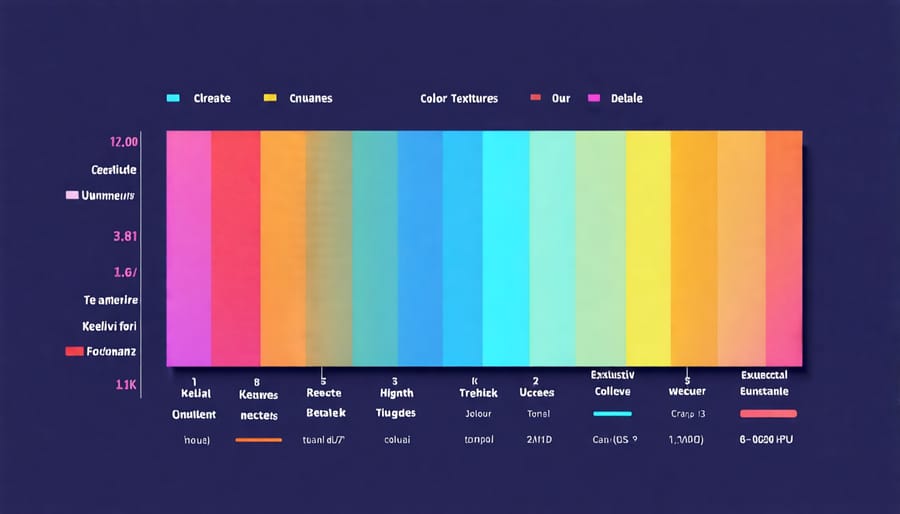
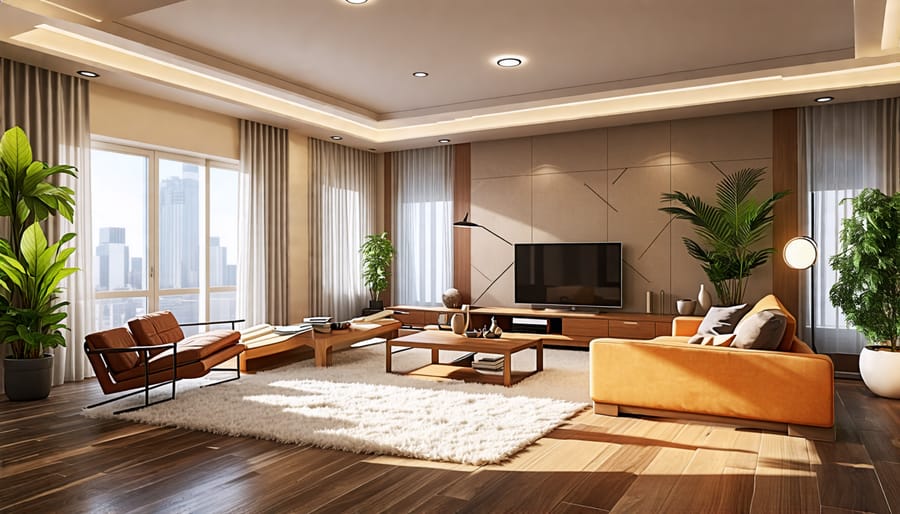
Types of Lighting and Their Applications
Ambient Lighting: Setting the Mood
Ambient lighting serves as the foundation of any lighting design, creating the overall atmosphere and ensuring a space is both functional and inviting. It provides a uniform level of illumination, allowing people to navigate comfortably. Whether you’re designing a cozy living room or a sophisticated office, ambient lighting sets the tone by establishing the primary mood and complementing other lighting layers. By carefully considering fixture placement and bulb types, ambient lighting harmonizes with architectural elements to enhance and define a space’s character.
Task Lighting for Functionality
Task lighting is essential for enhancing functionality in various spaces, ensuring activities are performed with precision and ease. By focusing light on specific areas, such as kitchen countertops or home office desks, it supports detailed tasks and reduces eye strain. Selecting the right fixtures, such as under-cabinet lights or desk lamps, optimizes both comfort and productivity. Consider incorporating smart lighting solutions for customizable brightness and energy efficiency, adapting to different needs while maintaining an elegant atmosphere.
Accent Lighting Elements
Accent lighting serves as a powerful tool to highlight specific design features and artwork, adding depth and drama to any space. By focusing attention on elements like architectural details or prized art pieces, accent lighting creates focal points that transform a room’s ambiance. Consider fixtures such as track lights or picture lights that offer adjustability and precision, allowing you to direct light exactly where it’s needed. Ideal for living rooms, galleries, or showrooms, accent lighting enhances aesthetics while showcasing your space’s unique character.
Decorative Lighting
Decorative lighting transforms spaces by highlighting architectural features and creating ambiance. It allows homeowners and professionals to express personal style and enhance décor through various lighting fixtures like chandeliers, pendant lights, and sconces. Selecting the right decorative lighting involves balancing aesthetics with functionality, ensuring that each fixture complements the space’s design while serving its purpose. Whether you’re an interior designer or a homeowner, consider factors like scale, finish, and placement to create visually appealing environments that reflect your unique style.
Designing a Lighting Plan
Assess the Space and Purpose
When planning the lighting design for a room, start by evaluating both the space and its intended use. First, measure the dimensions and assess natural light sources like windows or skylights. Understanding these parameters helps tailor the artificial lighting to complement what’s already present. Next, consider the room’s purpose. Is it a cozy living area, a high-energy home office, or a serene bedroom? Each function demands different lighting styles and intensities. Ambient lighting offers overall illumination, while task lighting focuses on specific activities, and accent lighting highlights features or decor. By matching the lighting to the room’s function, you can create an environment that supports its activities while enhancing its design. Additionally, consider the color temperature to set the mood; warmer tones create a welcoming atmosphere, while cooler tones are invigorating. Remember, the right lighting design is not just about brightness but about creating harmony and efficiency in your space.
Personalized Consultation Insights
When embarking on a lighting design project, personalized consultation offers tailored insights that can transform spaces effectively. At DonsBulbs, our experts emphasize the importance of understanding the unique needs of your environment. For homeowners, it means creating a cozy, functional lighting scheme that enhances the ambiance of each room. Interior designers and architects benefit from integrating style and functionality, ensuring that the lighting complements the overall design aesthetic. Event planners might prioritize dynamic and adjustable lighting solutions that cater to various occasion-specific needs, while commercial business owners often focus on energy efficiency and customer experience.
By considering factors such as room size, natural light availability, and intended mood, our team crafts lighting plans that not only meet but exceed expectations. We guide you through choosing the right fixtures, from ambient to task lighting, and explain energy-saving technologies and the nuances of color temperature. Trust DonsBulbs for expert guidance that illuminates every corner of your project with precision and style.
Choosing the Right Products
Understanding Product Specifications
Understanding product specifications is essential for effective lighting design. Start with lumen output, which measures the brightness of a light source. Opt for higher lumens for brighter spaces but match them to room size and purpose. Next, consider energy efficiency, often indicated by lumens per watt. Efficient lighting systems save on energy costs and benefit the environment. Additionally, explore other specs like color temperature, ranging from warm to cool tones, to create the desired mood. A well-informed choice in lighting specifications can transform any space, enhancing both functionality and aesthetics.
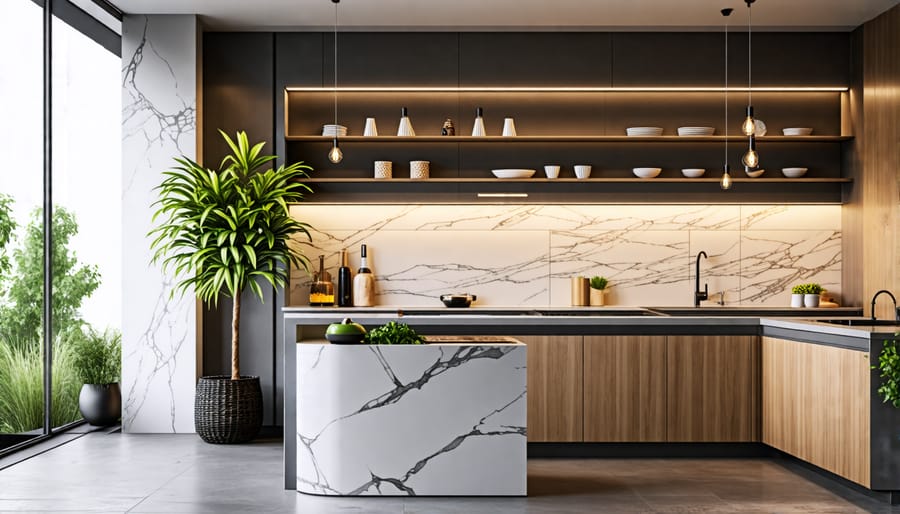
Leveraging Reviews and Comparisons
Navigating the extensive selection of lighting products can be overwhelming, but leveraging DonsBulbs’ reviews and comparison charts simplifies the decision-making process. Homeowners and professionals alike can access detailed reviews, offering insights into performance, durability, and aesthetics of various lighting options. By reading these reviews, you can make informed decisions based on real-user experiences. In addition, DonsBulbs’ comprehensive comparison charts facilitate a side-by-side analysis of key features, such as lumens, color temperature, and energy efficiency. This enables you to effortlessly compare different products and identify the best fit for your space, whether you’re designing a cozy living room, an elegant office, or a dynamic event venue. With personalized consultation services available, DonsBulbs offers guidance tailored to your unique project needs. Utilize these tools to ensure you choose lighting solutions that not only meet your criteria but also enhance the overall design and functionality of your space.
Conclusion: Light Up Your World
Reflecting on the essentials of lighting design, it’s clear that effective lighting can significantly enhance any space, providing both functionality and aesthetic appeal. As we’ve explored, understanding the fundamental concepts of ambient, task, and accent lighting, and how they interplay, is crucial. Each element should be thoughtfully planned to complement the room’s purpose and aesthetics, contributing to a harmonious and functional environment.
Taking action on these insights involves carefully assessing your unique needs and design aspirations. Don’t hesitate to seek professional advice or explore personalized consultations to refine your ideas and ensure optimal outcomes. Remember, lighting is more than just illumination—it’s an art that shapes mood, enhances architectural features, and transforms ordinary spaces into extraordinary experiences.
By applying these principles, you can light up your world in a way that not only meets practical needs but also elevates the overall ambiance of your home or business. Let these insights guide you as you embark on creating captivating environments with the power of light.

